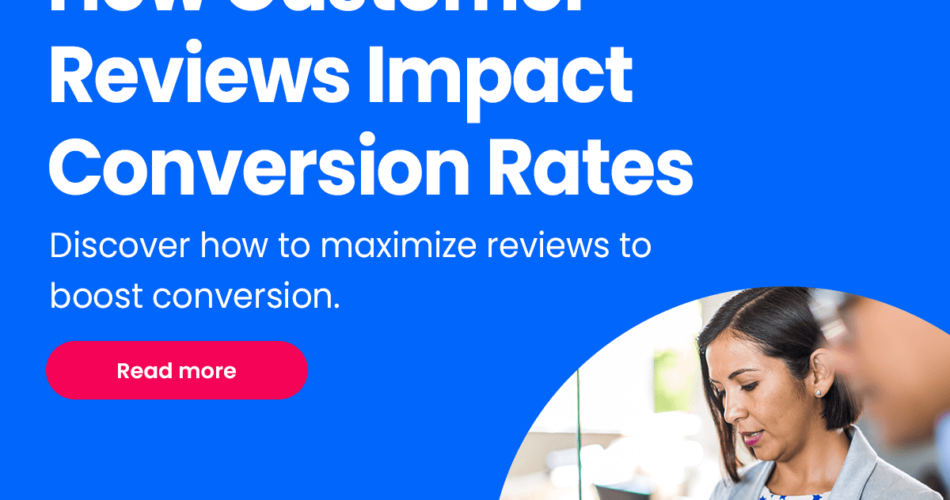Consider this: how many times have customer reviews played a part in your purchase decisions?
We bet there’s been a time when you were about to book a seemingly incredible hotel, only to backtrack that choice after reading the not-so-incredible TripAdvisor reviews.
Or maybe you’ve questioned the legitimacy of a website with prices a little too good to be true, but the reviews of satisfied customers eventually put your mind at ease.
These examples demonstrate just how much customer reviews can influence the purchase decisions of potential consumers.
However, the persuasive power of customer reviews isn’t unique to B2C. Product reviews can be equally impactful in the B2B decision-making process as well.
In this post, we’ll cover how to leverage customer reviews to your advantage, making it a key focus of your demand generation strategy.
How Customer Reviews Convert Buyers into Customers
Rather than taking guidance from a sales rep, today’s B2B customers prefer to carve out their own buyer’s journey—engaging with content most relevant to their professional interests, utilizing channels and platforms that fall in line with their communication preferences, and conducting research into products and vendors that best suit their business needs. This process normally takes around three months, as buyers, on average, consume 13 content pieces before making their final decision.
That said, without a sales rep to sing the praises of their products, it can still be a difficult task for buyers trying to find the right pick.
But B2B companies have an ace up their sleeve, another means of influencing potential buyers without exhausting resources or breaking the bank. It’s their existing customers. Or more specifically, their existing customer reviews.
Used strategically throughout the buyer’s journey, customer reviews can provide real insight into a company’s business tactics, its brand legitimacy, its products’ functionality, and the experiences of like-minded buyers. But unlike top-of-funnel content designed to attract and educate buyers in the initial stages of the sales cycle, customer reviews are most conducive to persuading leads in the consideration and decision stages of their journey.
These authentic recollections can provide the final reassurance buyers need to pull the trigger on their purchase decision.
Reviews can take many forms, including:
- Review site submissions on sites such as G2, Capterra, and TrustRadius
- Testimonial videos
- Case studies
- Articles
- Star ratings
And guess what? They work. Stats show customer reviews influence 93% of B2B buyers, with 64% of software buyers reading at least six customer reviews before making a final call.

Three Ways to Use Customer Reviews to Boost B2B Conversion
It’s clear with positive reviews on your side, it’s far easier to convince B2B prospects to give your products or services a shot. But how do you put this into practice? Here are three ways to leverage customer reviews to boost conversions:
1. Source the Right Reviews
Before you begin leveraging customer reviews, make sure you have enough of them backlogged—you can’t make something out of nothing. So, to ensure you have a good handful of timely, relevant feedback, send review requests to your existing customers. This can be as simple as sending an automated email a few months after onboarding.
For best results, ask customers specific questions about their experience to receive as many detailed reviews as possible. Consider questions like:
- How has our product or service complemented your existing technology stack?
- How intuitive is it to use our product?
- How cost-effective is our product?
- How happy are you with our customer service?
If you’ve run out of ideas, consider framing questions around common prospect concerns. For example, if prospects often feel overwhelmed with the implementation process, you may want to ask a questions like, “Was your solution implementation completed on time?” or “Was your solution implementation completed within budget?” This way, you’ll be able to source relevant feedback that touches on the various aspects and shared experiences of your target customer base.
2. Discover Competitor Displacement Opportunities
In a nutshell, competitor displacement is the practice of stealing business away from competitors.
Reviews can help you identify targets for displacement opportunities. Scope out whether any of your current prospects have left negative reviews of your close competitors. If they have, consider bumping up their lead priority, as they’ll more likely be open to new solutions.
If you happen to spot a review from a company that’s not currently on your radar, dive into their company credentials and tech stack to see if you’re a comparable fit. Then, strategically craft messaging that speaks to the exact issues with which prospects struggle.
When crafting displacement campaign content, use a targeted approach that speaks directly to the problems mentioned in competing reviews, highlighting how your company can actually solve those particular issues. Use your own positive reviews to support your efforts, sharing those that mention the exact features, benefits, or services that prospects hoped to get from your competitors.
3. Address Negative Reviews
The golden rule of reviews? Never attempt to hide or discredit a negative one.
There’s no such thing as a perfect product, so having nothing less than five-star reviews will certainly raise suspicions. Prospects may suspect foul play and wonder if you’ve manipulated your brand’s image.
Ironically, though, the presence of negative reviews lends more to your brand’s overall authenticity, as it shows you haven’t initiated any under-the-table strategies to silence negative feedback or artificially gain positive reviews.
If you do receive a less than glowing review, don’t bury your head in the sand. Data shows 45% of consumers feel encouraged to visit business websites that feature active responses to negative reviews. In addition, 41% believe brands’ responses to negative feedback shows they actually care about their customers.

See the B2B Journey from the Buyer’s Eyes
B2B buyers interact with multiple pieces of content throughout their purchase journey to evaluate whether a product really does have the potential to solve business issues or achieve a certain objective. Hence, customer reviews are an essential part of this process, and they’re often the deciding factor in eliminating a particular vendor from a buyer’s short list.
***
Looking for more intel into the B2B buyer’s journey? Watch our on-demand webinar to find out customers’ key considerations when purchasing new technology.
Source link



